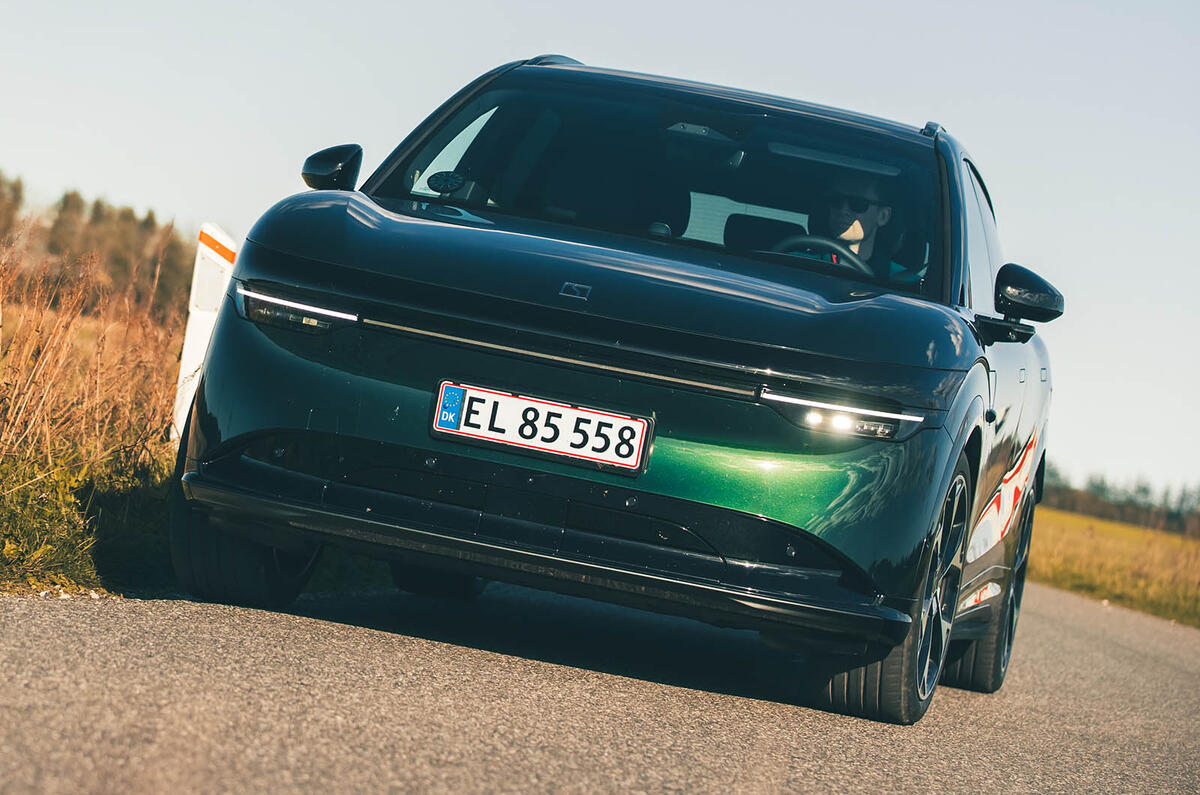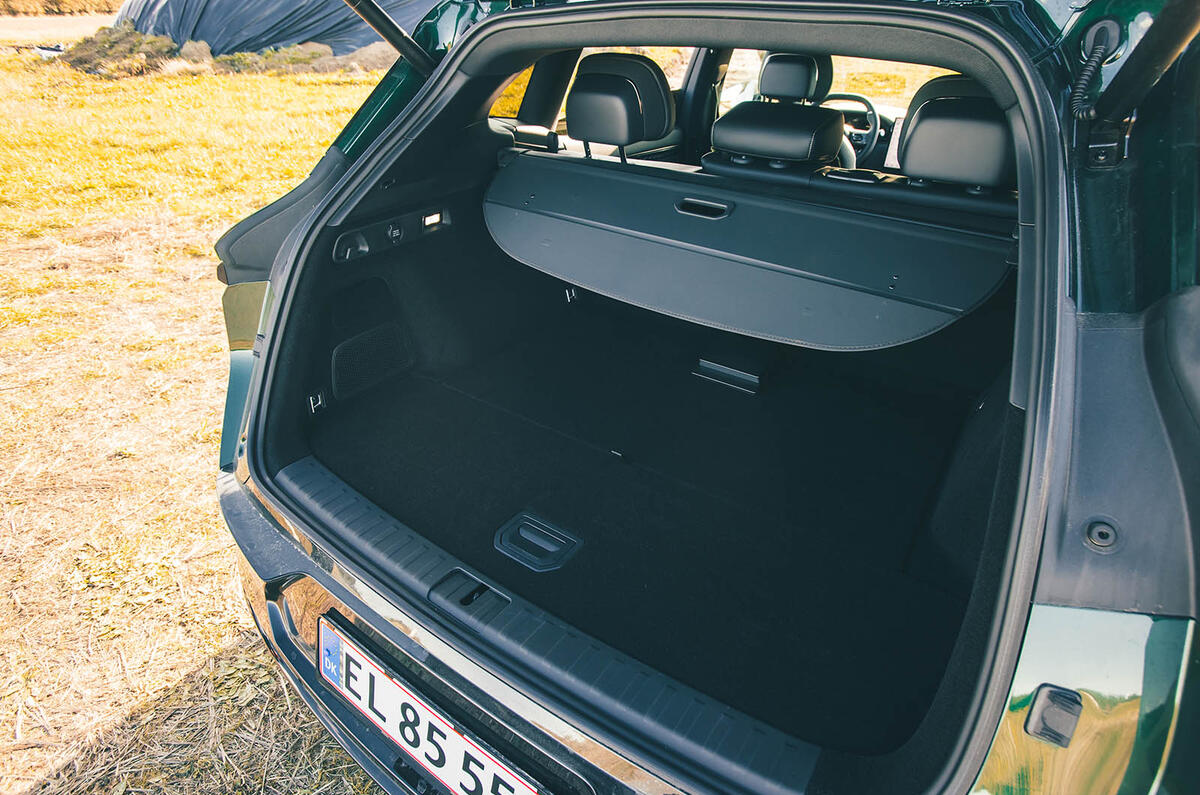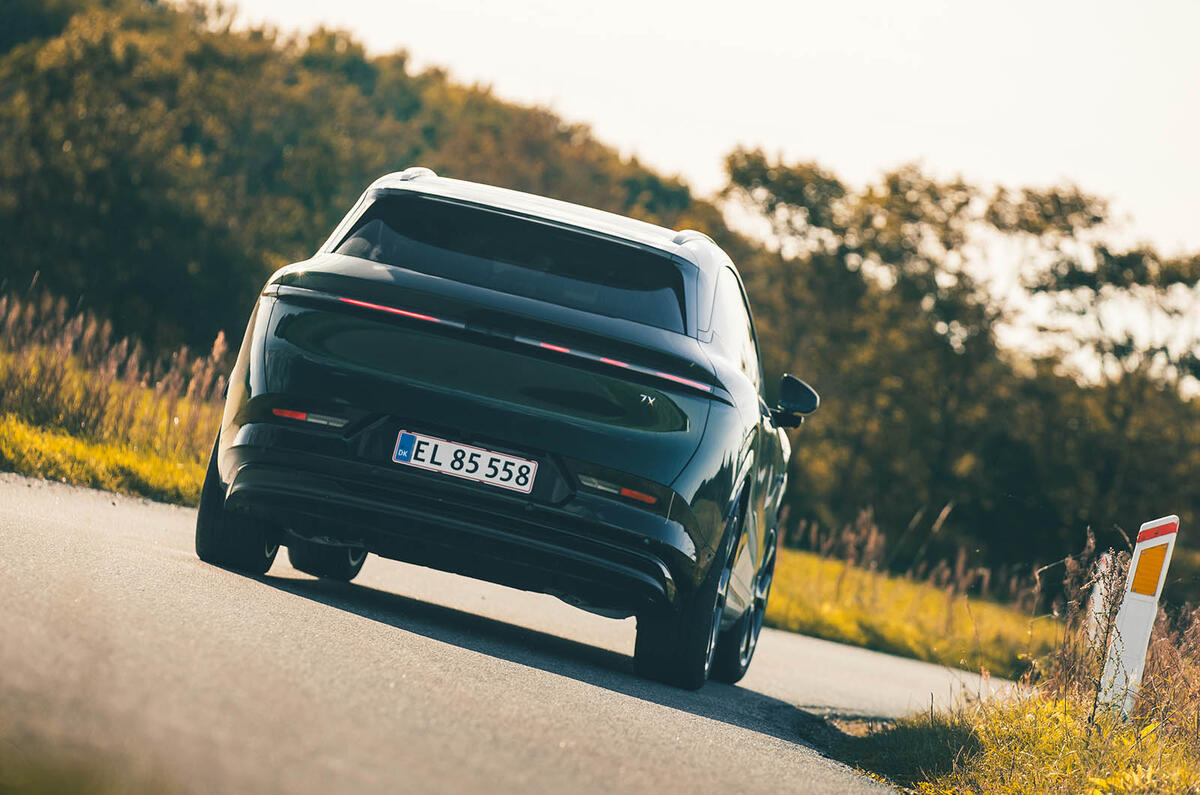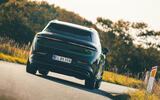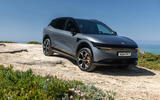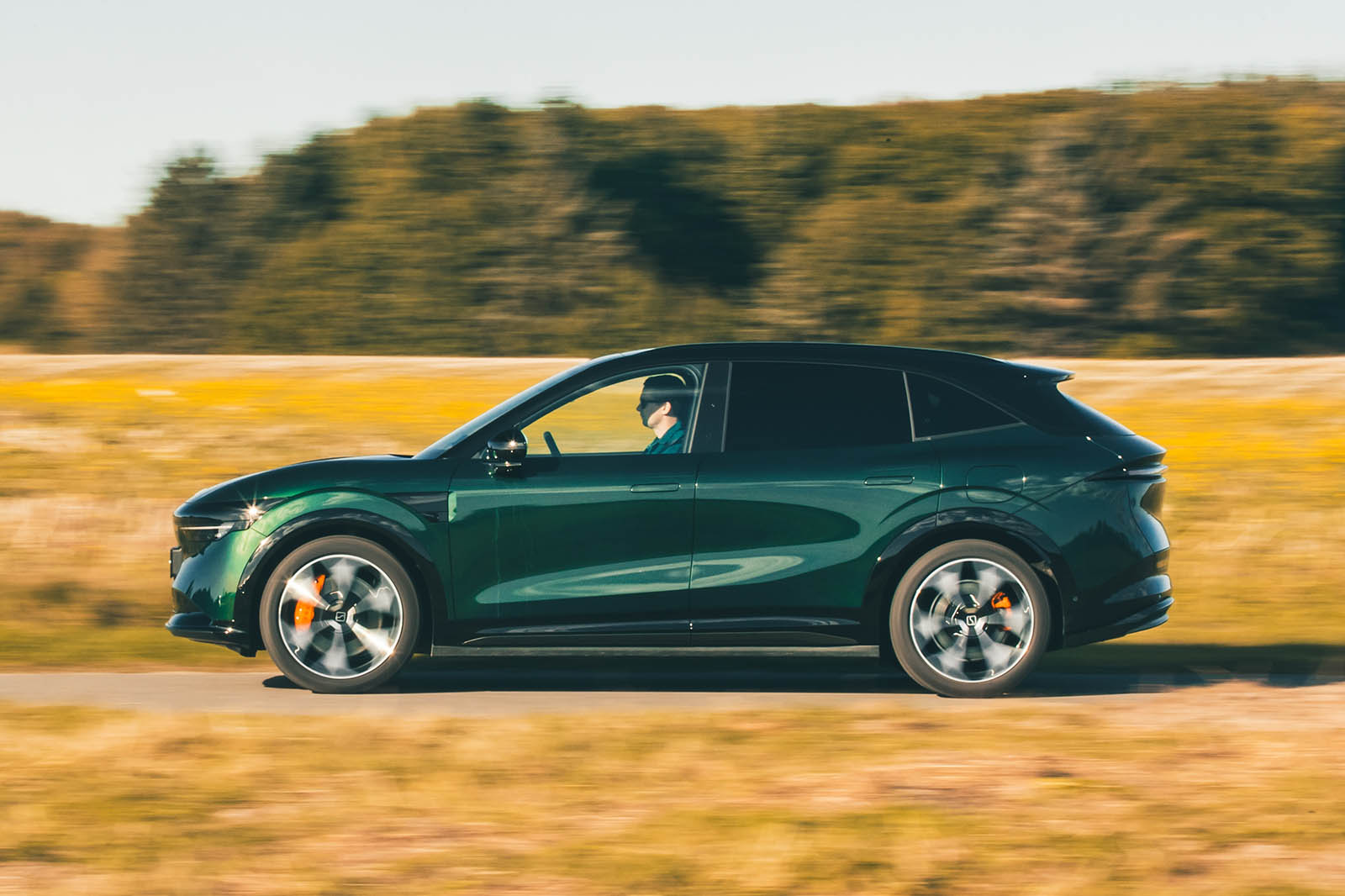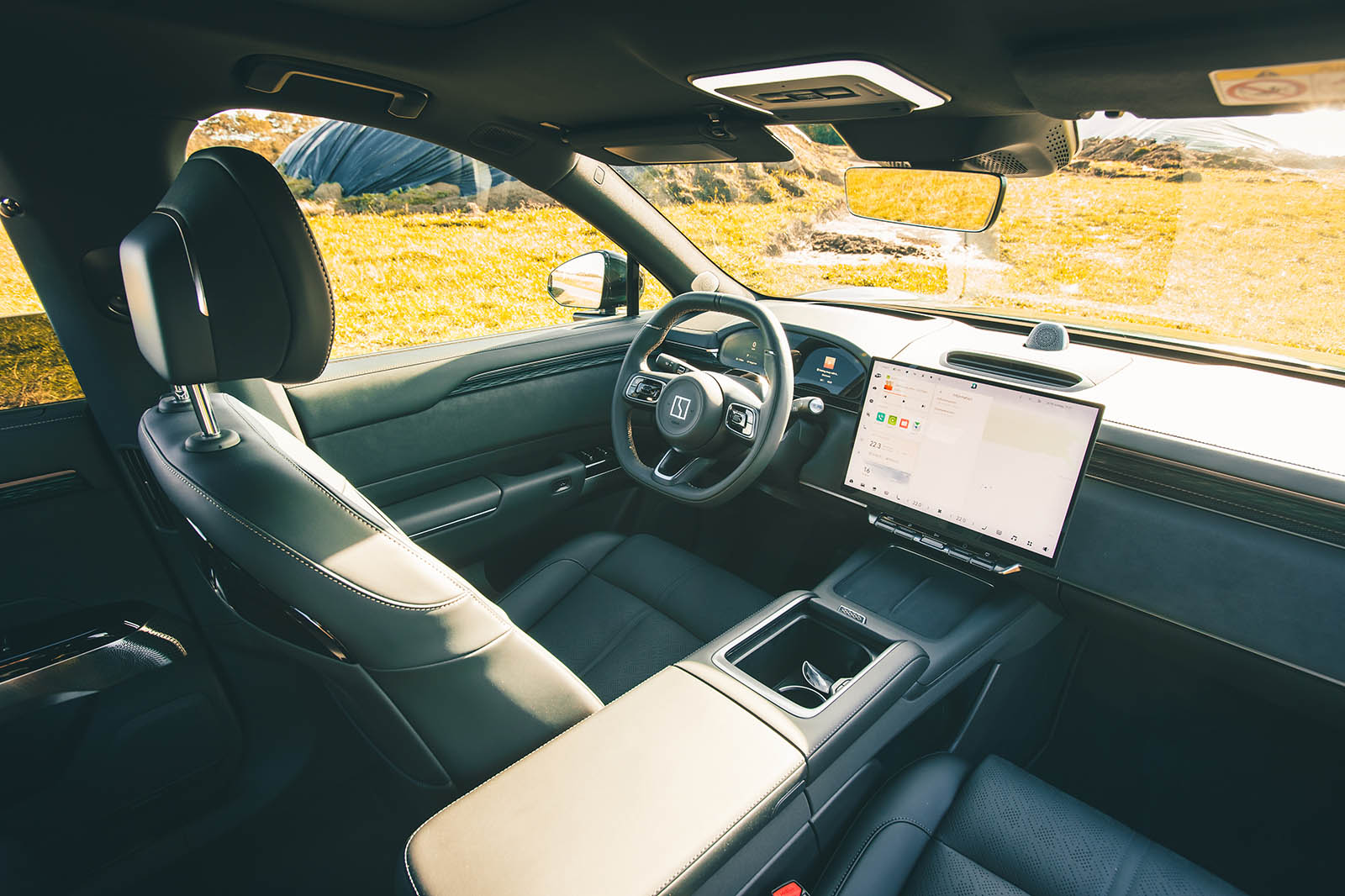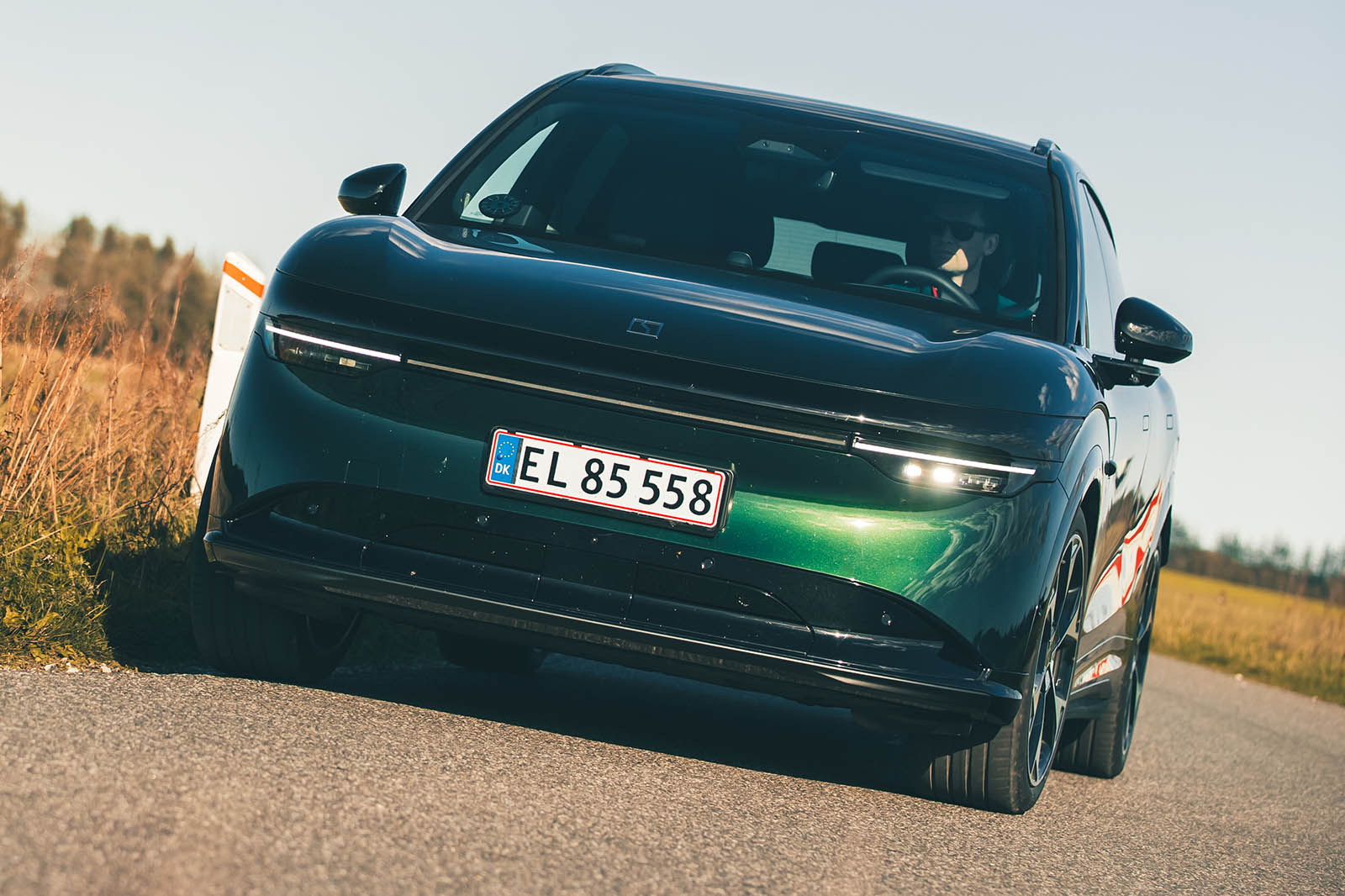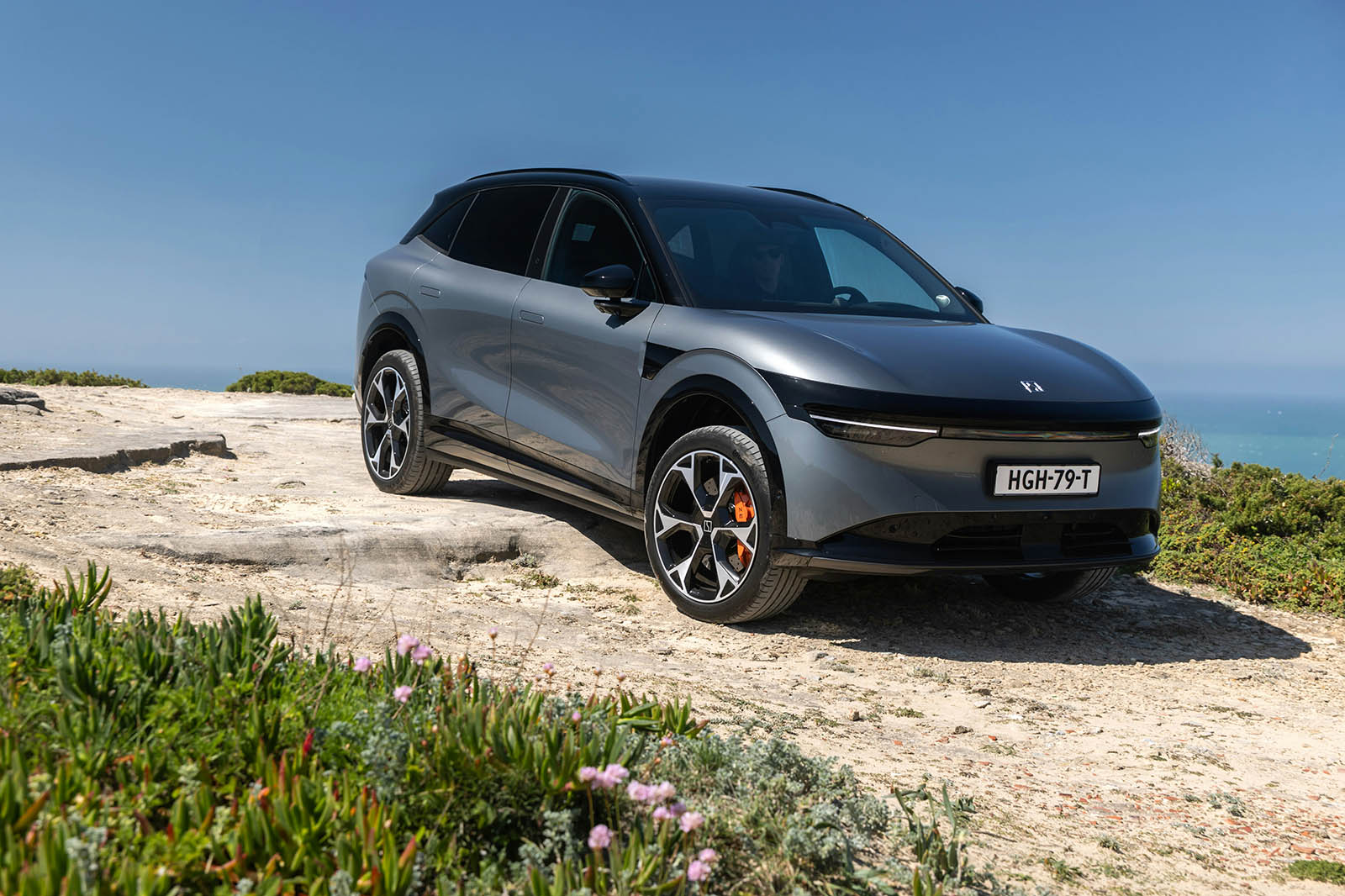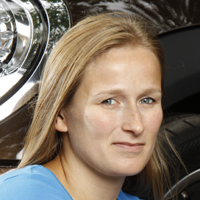You can’t miss the Tesla influence when you slide into the 7X’s cabin. The huge, 16in central touchscreen dominates the dash and is your window to all of the car’s controls, including Pet Mode, Camping Mode and every other mode – and also your steering wheel adjustment, which is annoying. Still, it gets a Qualcomm Snapdragon 8295 processor! Oof… Check out those processing speeds.
It’s a slightly boring, predictable-looking cabin, but in this high-spec test car there are some subtle crystal- and metal-effect trim highlights, and it all feels pretty classy. Having said that, maybe the crystal bits are a tad chintzy? Still, you can see and feel that this is no Leapmotor or Jaecoo: Zeekr is out for Tesla, Volkswagen, BMW and Audi, and it’s got the perceived quality and the equipment to back that up.
In this range-topper, there are eight-way electrically adjustable seats that are heated and cooled, a huge panoramic glass roof, two cooled wireless phone charging pads, Matrix LED headlights and all of the semi-autonomous systems you expect, while an optional pack adds a 36in head-up display and a 21-speaker sound system.
It’s not short of space, the 7X. There’s masses of space in the heated back seats, which also recline electrically and have their own climate control.
The doors open to 90deg for great access, too, which is useful if you’ve got small kids to wrangle into their child seats.
The boot is also huge, with a broad, deep boot floor offering 539 litres of space – almost as much as you get in the Skoda Enyaq.



